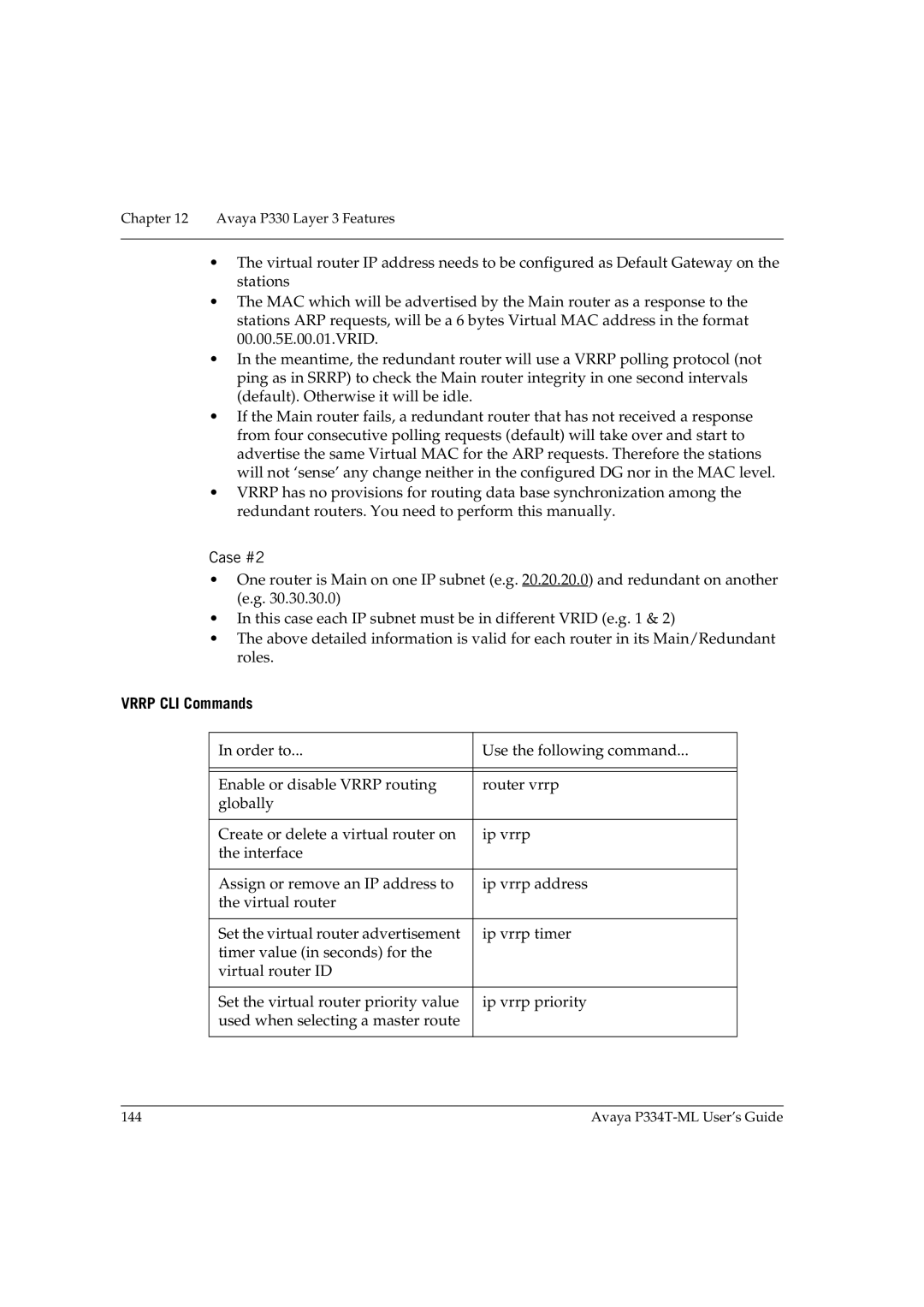
Chapter 12 Avaya P330 Layer 3 Features
•The virtual router IP address needs to be configured as Default Gateway on the stations
•The MAC which will be advertised by the Main router as a response to the stations ARP requests, will be a 6 bytes Virtual MAC address in the format 00.00.5E.00.01.VRID.
•In the meantime, the redundant router will use a VRRP polling protocol (not ping as in SRRP) to check the Main router integrity in one second intervals (default). Otherwise it will be idle.
•If the Main router fails, a redundant router that has not received a response from four consecutive polling requests (default) will take over and start to advertise the same Virtual MAC for the ARP requests. Therefore the stations will not ‘sense’ any change neither in the configured DG nor in the MAC level.
•VRRP has no provisions for routing data base synchronization among the redundant routers. You need to perform this manually.
Case #2
•One router is Main on one IP subnet (e.g. 20.20.20.0) and redundant on another (e.g. 30.30.30.0)
•In this case each IP subnet must be in different VRID (e.g. 1 & 2)
•The above detailed information is valid for each router in its Main/Redundant roles.
VRRP CLI Commands
In order to... | Use the following command... |
|
|
|
|
Enable or disable VRRP routing | router vrrp |
globally |
|
|
|
Create or delete a virtual router on | ip vrrp |
the interface |
|
|
|
Assign or remove an IP address to | ip vrrp address |
the virtual router |
|
|
|
Set the virtual router advertisement | ip vrrp timer |
timer value (in seconds) for the |
|
virtual router ID |
|
|
|
Set the virtual router priority value | ip vrrp priority |
used when selecting a master route |
|
|
|
144 | Avaya |
